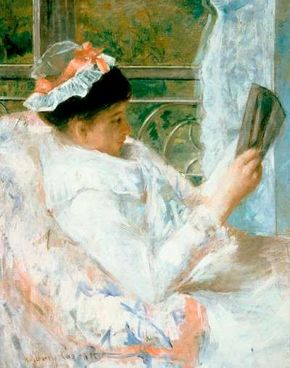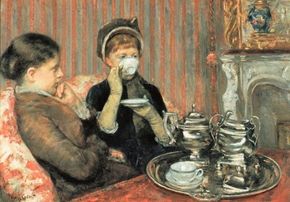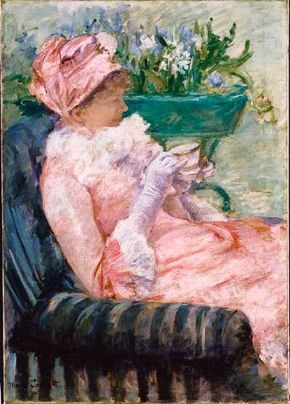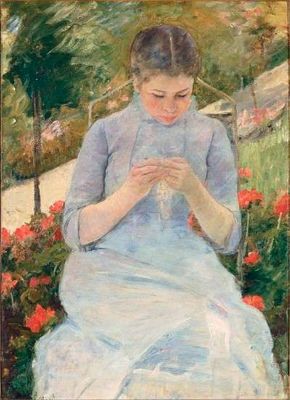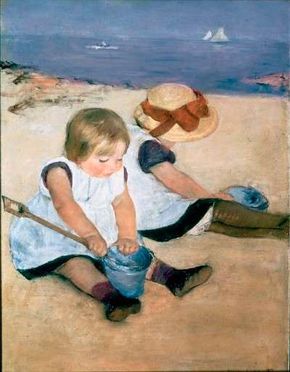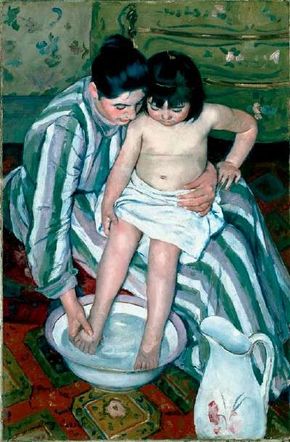Mary Cassatt was the only American invited to join the Impressionist painters. Cassatt's introduction to the group came after Hilaire-Germain-Edgar Degas noticed her work in the official Salon, and Degas was able to convince Mary Cassatt to join the Impressionists in time for the fourth exhibition. Cassatt submitted several works to that show, including her famous painting Woman Reading.
Though Mary Cassatt declined to participate in the seventh Impressionist exhibition -- in support of Edgar Degas, who had withdrawn due to an internal dispute -- Cassatt was generally a consistent presence in the Impressionists' exhibitions from the fourth onward. Throughout Mary Cassatt's career her intimate portrayal of women's lives added a dimension to the subject of female modern life pioneered by Berthe Morisot. Through the course of the exhibitions, Mary Cassatt would remain the sole American participant.
Advertisement
Follow the links below to learn more about paintings by Mary Cassatt, the American painter one contemporary critic called "exquisitely Parisian."
- Woman Reading: Woman Reading by Mary Cassatt is typical of her interest in the daily lives of women. Learn about Mary Cassatt's 1878 painting, Woman Reading.
- Five O'Clock Tea: Mary Cassatt's 1880 work Five O'Clock Tea depicts two women sharing a quiet moment. Learn about Cassatt's Five O'Clock Tea, which was praised by critics for its freshness.
- The Cup of Tea: Works such as Cassatt's The Cup of Tea established her as essentially French in the eyes of the critics. Learn about this Impressionist painting by Mary Cassatt.
- Young Woman Sewing in a Garden: Young Woman Sewing in a Garden caused some critics to compare Mary Cassatt to Edgar Degas. Read about Young Woman Sewing in a Garden, which Cassatt painted between 1880-1882.
- Children Playing on the Beach: Cassatt's Children Playing on the Beach established the artist as one of the foremost chroniclers of children in the Impressionist movement. Learn about Children Playing on the Beach by Mary Cassatt.
- The Child's Bath: The Child's Bath reflects Mary Cassatt's later interest in Japanese art. Read about The Child's Bath, by Mary Cassatt, which blends Japanese and European aesthetics.
On the next page, you'll find a detailed look at one of the paintings Mary Cassatt submitted to the Impressionists' fourth exhibition.
For more on Impressionist paintings, artists, and art history, see:
For more on Impressionist paintings, artists, and art history, see:
Advertisement
